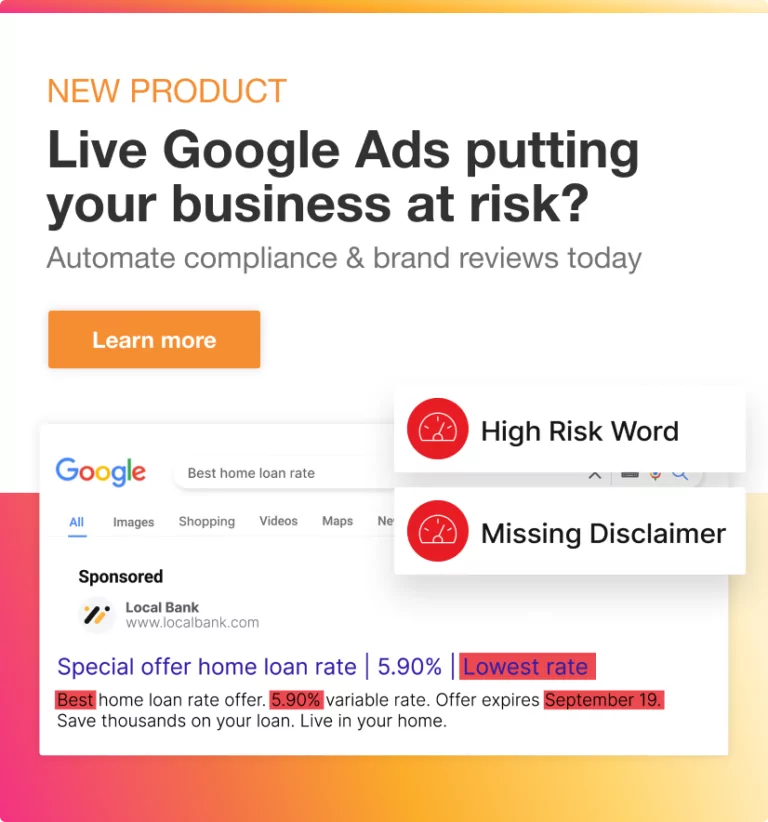Marketers have always operated in a world with shifting consumer behavior, but what sets 2025 apart is its intersection with the industry’s mainstream adoption of AI – shaping how content is delivered, how much of it is delivered, its messages and even how it’s being produced, monitored and measured.
Staying ahead of these changes is no longer optional—it’s essential for brands that want to remain competitive and relevant. If you’re looking to future-proof your content marketing strategy, you need actionable insights backed by real-world data. That’s where the 2025 Content Marketing Trends Report comes in. This comprehensive guide digs into the trends that will define this year and beyond, offering practical advice and strategies to help you navigate the challenges and opportunities ahead.
Why will 2025 be a Turning Point for Content Marketing?
The marketing world is at an inflection point. Due to the maturation of ‘new’ media and technology, consumer expectations are higher than ever, and brands are under pressure to deliver personalized, engaging experiences at scale. At the same time, new regulations and marketing compliance requirements are adding layers of complexity to content creation.
Content marketers using playbooks from even two years ago will be left behind due to the rapid pace of tech being deployed by the industry from all angles.
The 2025 Content Marketing Trends Report draws on data from over 1 million users across 55 countries, as well as leading third party research to keep you informed.

What You’ll Learn in the Report
- Data Around Skyrocketing Content Inventory
Content creation is booming like never before, but how is it affecting Return on Investment (ROI)? How much are marketers investing over and above previous years and how much is being fuelled by AI? See how these investments align with emerging content trends. - Discover How Marketers are Managing Bulk Content Production
It’s one thing to have the ability to generate marketing content in bulk, but channeling it through an efficient approval workflow with audit trails still needs to happen to maintain brand and strategic alignment. See how dedicated marketing workflows are becoming a necessity for the entirety of the content lifecycle. - The Importance of Video
Discover why video content dominance is only set to accelerate in 2025 and why short-form video is increasingly integral to how brands communicate with their audiences, (both B2C and B2B). - The Shift Toward Hyper-Personalized Content
Personalization isn’t new, but with AI and machine learning, it’s more powerful than ever. Brands must now craft hyper-targeted content that speaks to the individual. From AI-driven content curation to dynamic content that adapts to consumer profiles and behavior, this shift is creating a more personalized, relevant experience for your audience. - The Role of AI in Content Monitoring and Compliance
For those in regulated industries, maintaining compliance with escalating content creation is a growing challenge. AI-powered content monitoring tools are increasingly being used by both brands and regulators in a race to find errors. See how this is playing out and get actionable insights into the threats and opportunities. - The Effect of AI on SEO
Find out what impact have apps like ChatGPT and Deepseek had on search, as well as what the changing Google algorithms mean for content marketers.
It’s super cliche, but ultimately you’ll learn how to work smarter, not harder.
- Gain a Competitive Edge
Stay ahead of the curve by understanding the trends that will shape content marketing in 2025 and beyond. - Actionable Insights
Learn how leading brands are leveraging AI, video, and personalization to drive results. - Efficiency Boosters
Discover tools and techniques to streamline your workflows, reduce manual tasks, and focus on high-impact initiatives. - Compliance Confidence
Navigate the complex world of content regulations with proven strategies for maintaining compliance without stifling creativity.

What Time-Tested Content Trends are Still Valid?
While 2025 is shaping up to be a year of groundbreaking advancements in content marketing, not everything from the past is obsolete. In fact, some time-tested trends continue to hold their ground, proving that good marketing principles are timeless. Here’s a look at what’s still working—and why you shouldn’t abandon these strategies just yet.
- Storytelling is Still King
No matter how advanced AI becomes or how much the digital landscape evolves, storytelling remains at the heart of effective content marketing. Humans are wired to connect with stories—they evoke emotions, build trust, and make complex ideas relatable. In 2025, brands that master the art of storytelling will continue to stand out, especially as audiences crave authenticity in a world saturated with AI-generated content.The key is to adapt storytelling to new formats and platforms. For example, short-form video platforms like TikTok and Instagram reels are perfect for bite-sized, impactful narratives. Meanwhile, long-form content like podcasts and blogs still offer space for deeper, more immersive stories.
- Quality Over Quantity
The rise of AI has made it easier than ever to produce content at scale, but that doesn’t mean quantity should trump quality. Audiences are becoming more discerning, and they can quickly spot low-effort, generic content. In 2025, the brands that succeed will be those that prioritize creating high-quality, valuable content—whether it’s a thought-provoking article, a visually stunning infographic, or an engaging video.This doesn’t mean you need to produce less content; it means you need to produce better content. Use AI tools to enhance your creativity and efficiency, but don’t rely on them to replace the human touch that makes content truly resonate.
- SEO is Still a Non-Negotiable
Despite the rise of AI-driven search tools and changing algorithms, SEO remains a cornerstone of content marketing. In 2025, the game has evolved—think voice search optimization and AI-generated content—but the fundamentals remain the same. Understanding your audience’s search intent, using relevant keywords, and creating content that answers their questions will always matter.The difference now is that SEO is becoming more sophisticated. Marketers need to stay updated on algorithm changes, leverage AI tools for keyword research, and focus on creating content that’s not just optimized for search engines but also genuinely helpful for users.
- Building Trust Through Transparency
Trust has always been a critical factor in content marketing, and in 2025, it’s more important than ever. With concerns about AI-generated content, data privacy, and misinformation on the rise, brands that prioritize transparency will win over their audiences. And as always, ensuring your messaging aligns with your values is key. Trust isn’t built overnight, but it’s one of the most valuable assets a brand can have.
What Type of Content is No Longer Effective?
While some trends stand the test of time, others are losing their relevance in 2025. As consumer preferences shift and technology advances, certain types of content are becoming less effective—or even counterproductive. Here’s what’s on the decline and why you might want to rethink these strategies.
- Overly Promotional Content
Gone are the days when audiences would tolerate blatant self-promotion. In 2025, consumers are looking for value, not sales pitches. Content that’s overly promotional or lacks substance is likely to be ignored—or worse, damage your brand’s reputation.Instead, focus on creating content that educates, entertains, or inspires your audience. For example, instead of writing a blog post that’s essentially a list of product features, create a guide that shows how your product solves a specific problem. The more value you provide, the more likely your audience is to engage with your brand.
- Generic, One-Size-Fits-All Content
Personalization is no longer a nice-to-have—it’s a must. In 2025, generic content that doesn’t speak to a specific audience or address their unique needs is becoming increasingly ineffective. Consumers expect brands to understand their preferences, behaviors, and pain points, and they’re quick to dismiss content that feels impersonal.This is where AI can be a game-changer. Use data and AI tools to create hyper-personalized content that resonates with individual users. Whether it’s a tailored email campaign, a dynamic website experience, or a customized social media ad, personalization is key to staying relevant.
- Clickbait Headlines
Clickbait might have worked in the past, but in 2025, audiences are wise to the tactic—and they’re not impressed. Misleading headlines might drive clicks in the short term, but they erode trust and damage your brand’s credibility over time.It’s far better to focus on crafting headlines that are both attention-grabbing and accurate. Use tools like AI-powered headline generators to test different options and see what resonates with your audience. Remember, the goal is to attract the right audience, not just any audience.
- Overly Long, Unstructured Content
While long-form content still has its place, overly long and poorly structured content is losing its appeal. In 2025, attention spans are shorter than ever, and audiences want content that’s easy to consume and digest.If you’re creating long-form content, make sure it’s well-organized and visually appealing. Use headings, bullet points, and images to break up the text and make it more scannable. And don’t forget to include a clear call-to-action (CTA) to guide your audience on what to do next.
- Ignoring Accessibility
In 2025, accessibility is no longer optional. Content that isn’t accessible to all users—including those with disabilities—is not only ineffective but also exclusionary. This includes everything from videos without captions to websites that aren’t screen-reader friendly.Make accessibility a priority in your content strategy. Use alt text for images, provide transcripts for videos, and ensure your website is navigable for all users. Not only is this the right thing to do, but it also expands your reach and improves your brand’s reputation.





